 |
O R A C L E O B S E R V A T O R Y Report 21-22 April 2009 |
|
|
I wanted to observe and photograph the occultation of Venus that was to occur about sunrise on Wednesday, 22 April 2009. My best view (I thought) would be from Oracle Observatory. Earlier this month I measured the altitude (in degrees above the horizon) of a low hill to the east of Oracle Observatory to ensure that the moon and Venus would be above the hill during the occultation.
As has been true recently, the weather forecasts for the evening of 21 April and the morning of 22 April were widely varied in the days leading up to the 21st. But even with some clouds in the forecasts I decided to chance it. I took my ETX-125AT and my PST (Personal Solar Telescope).
I arrived at 1415 MST. The temperature was 88°F with a slight breeze and a few clouds in the area. I initially checked the progress of our new home building (discussed on the "Road to Oracle" blog). I finished setting up at 1515 MST. Here's the set up for this visit (on the concrete pad for the eventual SkyShed POD).
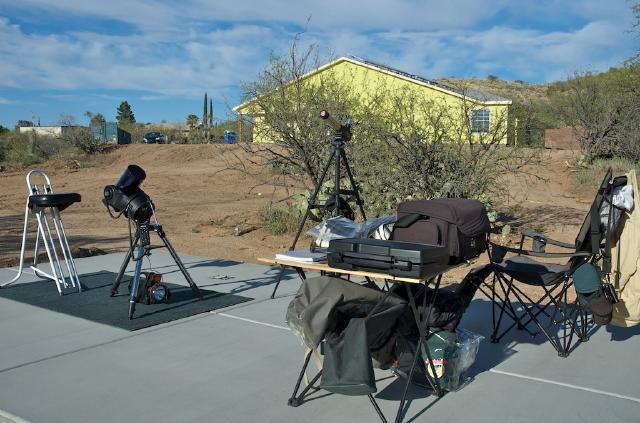
After I got everything set up, I took a look at the sun in the PST. There were several small prominences visible. Nothing spectacular though. I then did my usual walkaround and took some photos:
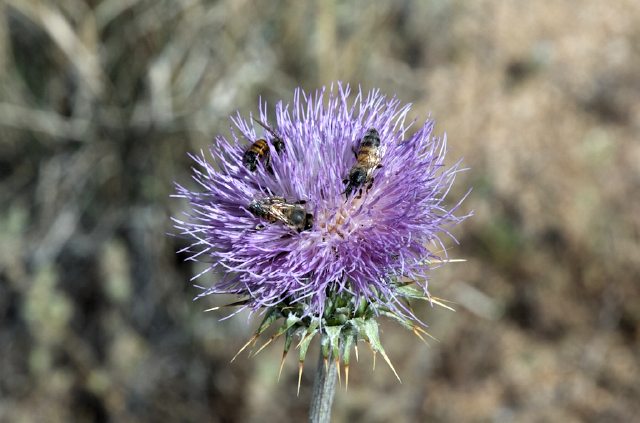
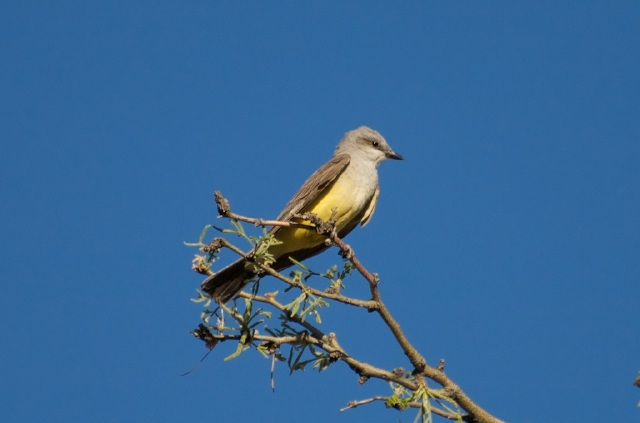
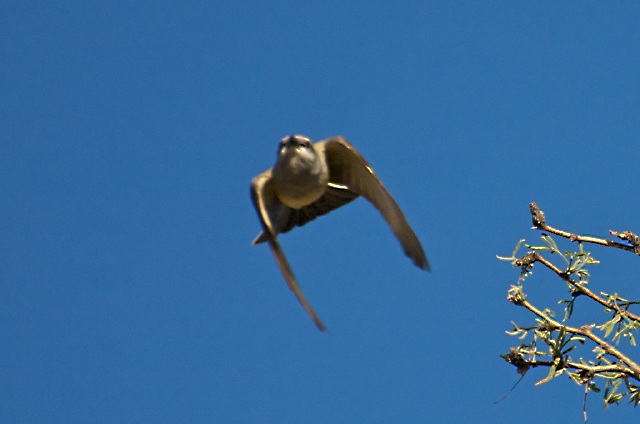
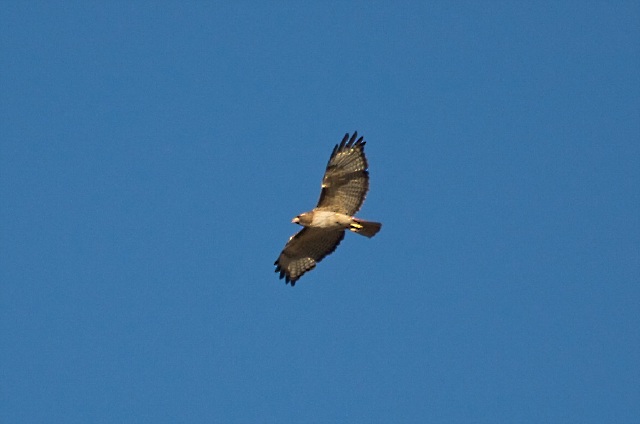
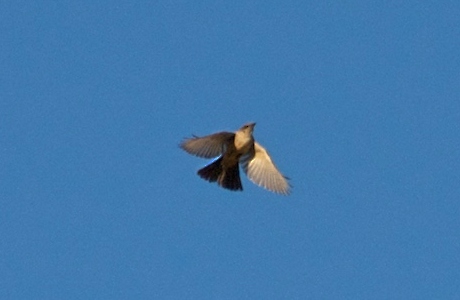

By 1600 MST, the clouds were increasing. An hour before sunset I posted my first "tweet" from Oracle Observatory on Twitter. By sunset the clouds had pretty much disappeared.
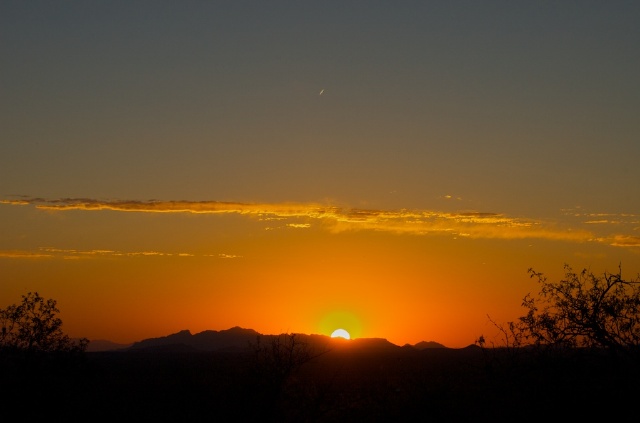
At 2000 MST, temperature 69°F, I powered up the ETX-125. As you can see in the setup photo, I had put the ETX in polar mode. I did a One Star alignment to align the mount polar axis. Getting the latitude and azimuth properly adjusted with the Meade #884 tripod was a challenge, as there are no fine-adjustment controls. But after several minutes, I managed to get Polaris centered in the 26mm eyepiece. The AutoStar then slewed to Sirius, which appeared at the edge of the field-of-view of the eyepiece. Pretty good.
Some clouds were now appearing low in the southwest. I took a quick look at M42, the Great Orion Nebula, and then moved to Saturn. Three moons were easily visible. Saturn looked nice in the 15mm eyepiece; but with the 9.7mm eyepiece, the ring tilt became evident as small gaps could be seen on either side of the planet's disk. At 2030 MST, I saw the Zodiacal Light in the western sky. At 2100 MST, I took some photos of Saturn. Here's the best single frame image taken with the Nikon D70 DSLR at ISO 800 using a 2X Barlow Lens at prime focus:

I noticed that the clouds in the southwest were no longer low on the horizon. They were coming my way. I took a look at the Ghost of Jupiter with a 15mm eyepiece. It was very bright with some details visible. A very nice object.
By 2130, the clouds were now covering half of the sky, from the southeast through the zenith to the northwest. I put the ETX to sleep and started to listen to some episodes of the radio show "Gunsmoke" on my iPod.
At 2240 MST, temp 64°F, it was cloudy over most of the sky. However, at 2330, there were some holes in the clouds; so I decided to wake the telescope and do some observing. I was able to look at M13, the Great Globular Cluster in Hercules. I then switched the ETX to Alt/Az mounting and realigned the AutoStar in preparation for the Venus occultation. Then I was able to view M57, the Ring Nebula in Lyra. A few nice meteors were seen. Some were from the Lyrid Meteor Shower. Unfortunately the clouds were moving too rapidly, so I decided to just sit in my recliner and watch the meteors (and clouds) and listen to "Gunsmoke". I did that until about 0200 MST.
I woke up at 0400 MST. The temperature was 59°F and the skies were clear! I saw several nice Lyrid meteors from 0400-0430. At 0430, I woke up the telescope and looked at Jupiter, which was low in the southeast. Four moons were visible, although the seeing was not good due to the low altitude. The Milky Way was high overhead and lovely.
At 0450 MST, the moon and Venus appeared over the hill to the east. So, my earlier altitude measurements were exact! At 0455, I took this photograph with my D70 and 300mm telephoto:

The occultation began at 0507 MST. Here are two images taken at prime focus of the ETX-125 with the D70 DSLR. (Venus is slightly overexposed.)


While waiting for Venus to reappear from behind the moon, some thin clouds moved up from the south and began to cover the moon. By the time of reappearance at 0554 MST, the moon was just visible through the clouds. Unfortunately, some tree limbs also got in the way. Here is a photo through the ETX just as Venus began to reappear from the dark side of the moon, followed by one showing Venus after it had fully appeared:


Here is a photo taken with the 300mm telephoto showing the moon and Venus through the clouds:
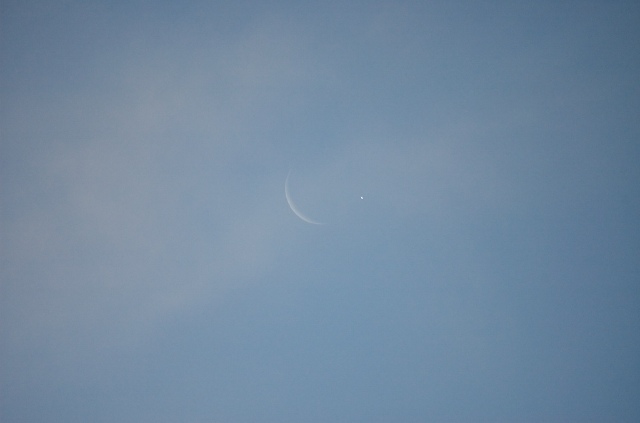
It was fun to watch the occultation of Venus. Venus was a nice crescent phase, with the moon nearly the same crescent phase.
I began to pack up at 0605 MST. I stayed at Oracle until 1100 to watch some new home work.
Return to the Oracle Observatory Main Page.